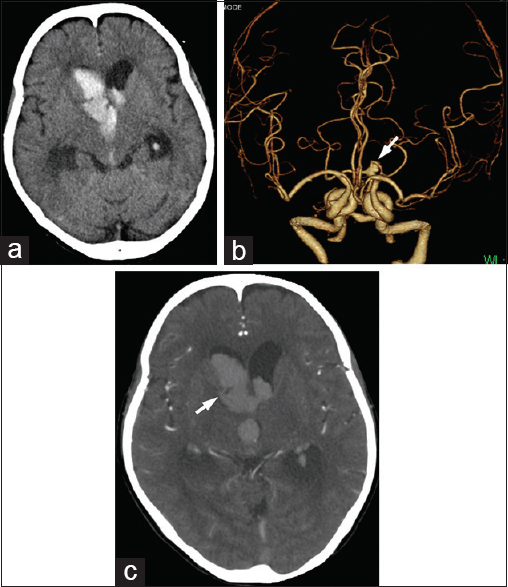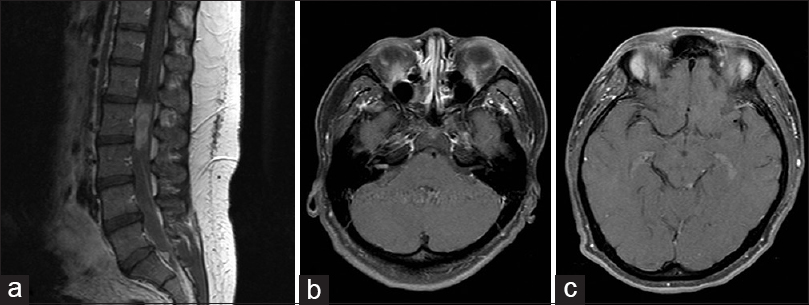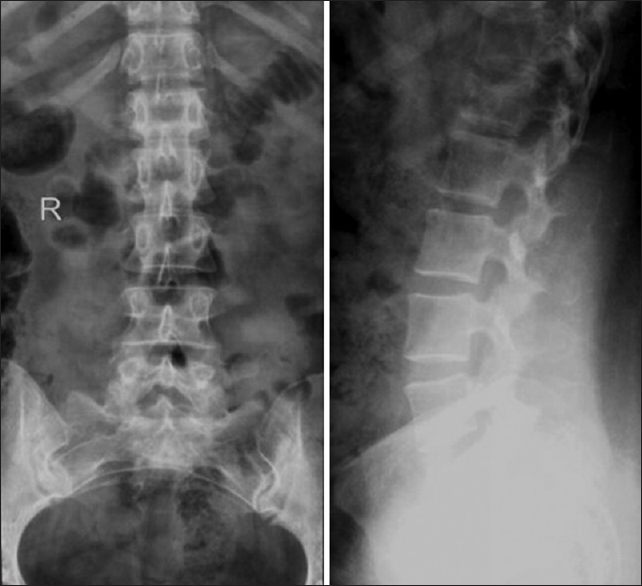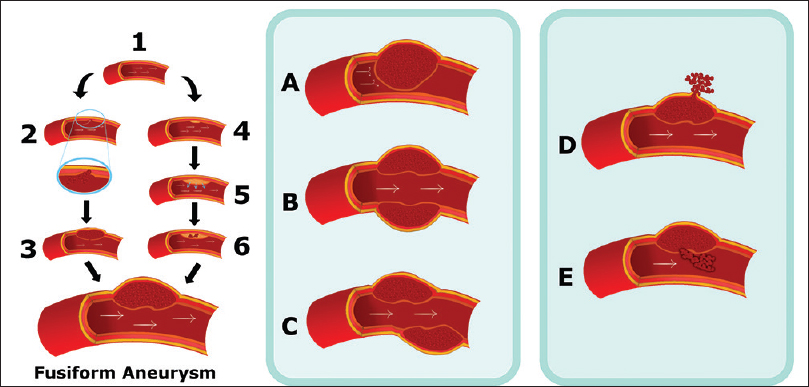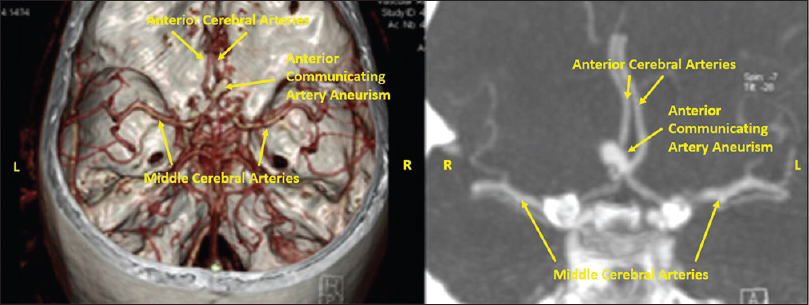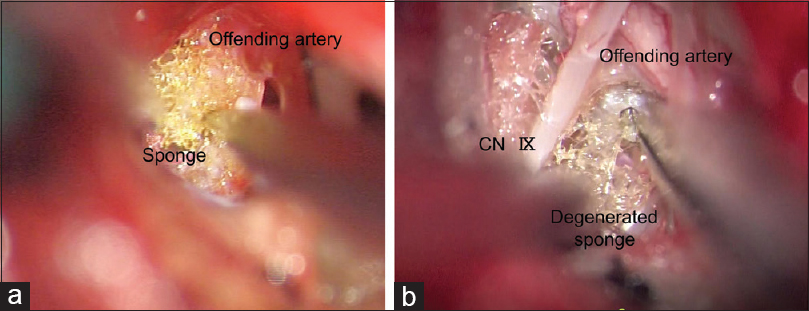Aneurysm of lenticulostriate artery in a patient presenting with hemorrhage in the caudate nucleus and lateral ventricle-delayed appearance and spontaneous resolution
Date of publication: 21-Sep-2018
Background:An aneurysm of distal lenticulostriate artery is very rare. The natural course and management of this rare aneurysm are not clear.
Myxopapillary ependymoma with anaplastic features: A case report with review of the literature
Date of publication: 20-Sep-2018
Background:Myxopapillary ependymoma (MPE) with anaplastic features is extremely rare, with only three case reports in the literature.
Compartment syndrome of lumbar paraspinal musculature after percutaneous pedicle screw fixation
Date of publication: 20-Sep-2018
Background:Compartment syndromes have been reported in nearly every anatomical area of the extremities. Similarly, in the lumbar spine, there is a risk of a compartment syndrome following either direct or indirect injury to the paraspinal muscles. In this study, we present a case of lumbar paraspinal compartment syndrome after percutaneous pedicle screw fixation for a spine fracture.
Fusiform aneurysms: A review from its pathogenesis to treatment options
Date of publication: 20-Sep-2018
Background:This study aims to present the most important considerations when it comes to patients features, clinical presentation, localization, and morphology of the aneurysm and the treatments outcomes of the fusiform aneurysms.
Infrared thermography brain mapping surveillance in vascular neurosurgery for anterior communicating artery aneurysm clipping
Date of publication: 20-Sep-2018
Background:Infrared thermography (IT) is a noninvasive, real-time diagnostic method that requires no contact with the patient and has a broad spectrum of potential applications in neurosurgery. It has been previously demonstrated the high sensitivity and specificity that IT has to detect brain blood flow changes.
Prosthetic material degeneration over time as a possible factor in delayed recurrence of hemifacial spasm after successful microvascular decompression
Date of publication: 10-Sep-2018
Background:The effectiveness of microvascular decompression in treating hemifacial spasm is widely accepted. However, some experience recurrence of hemifacial spasm after successful decompression surgery. Especially, delayed recurrence more than 5 years after surgery is rare and the cause of this phenomenon is unknown.
Unedited microneurosurgery of a fourth ventricular ependymoma
Date of publication: 10-Sep-2018
Background:In this video abstract, we present an unedited microsurgical resection of a fourth ventricular ependymoma performed by a senior author (JH). Currently, the goal of a standard treatment of a fourth ventricular ependymoma is based on microsurgical resection followed by radiochemotherapy. Our aim is to demonstrate the efficiency and safety of our microsurgical technique in deep brain territories under the principle “simple, clean, and preserving the normal anatomy.” For this, a midline suboccipital approach and a proper praying sitting position are essential.
Anterior clinoidectomy for paraclinoid aneurysms in Helsinki Neurosurgery
Date of publication: 10-Sep-2018
Background:In this video abstract, we present an intradural anterior clinoidectomy for management of some paraclinoid aneurysms. Quick adenosine cardiac arrest performed instead of an anterior clinoidectomy and proximal temporary clipping usually allows us a proximal control of aneurysms in Helsinki Neurosurgery. However, when the neck of the aneurysm remains hidden under the anterior clinoid process, or when some complex aneurysms have reduced space for placing temporary clips obstructing the definitive clipping, anterior clinoidectomy is the most available option.
Focused opening of the Sylvian fissure for the management of middle cerebral artery aneurysms
Date of publication: 10-Sep-2018
Background:A wide opening of the Sylvian fissure (SF) regarding the treatment of middle cerebral artery (MCA) aneurysm allows us to ensure early proximal control by the proximal start of Sylvian dissection and enough comfort for the microsurgical manipulation and aneurysm clipping. However, major mechanical manipulation of arteries associated with blood oozing into the surgical field may increase the incidence of postoperative vasospasm. The risk of Sylvian venous injury is bigger, and the damage of the superior temporal gyrus increases the risk of postoperative epilepsy as well. A focused opening of the SF based on 18 years experience of a senior author is an alternative technique we present in this video abstract.
One burr-hole craniotomy: Posterior interhemispheric approach in Helsinki Neurosurgery
Date of publication: 10-Sep-2018
Background:In this video abstract, we present a one burr-hole craniotomy for the posterior interhemispheric approach developed in Helsinki Neurosurgery to access posteriorly the medial surface of cerebral hemispheres, falx cerebri, and deep midline cerebrovascular structures. Therefore, preoperative imaging is essential to achieve an optimal operative corridor for a safest and more effcient approach.


